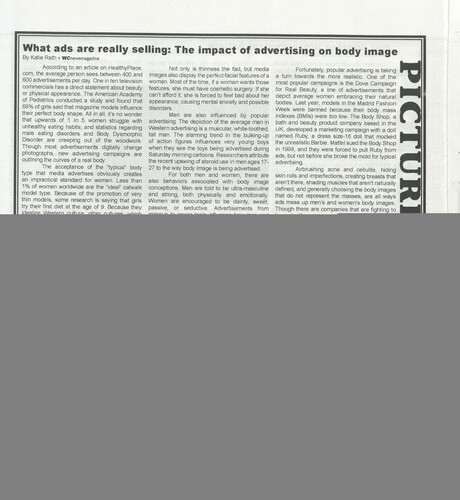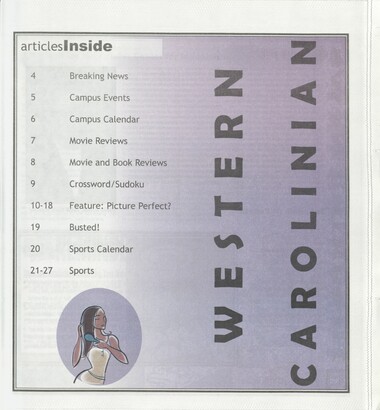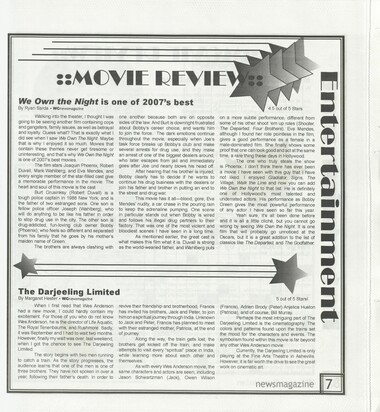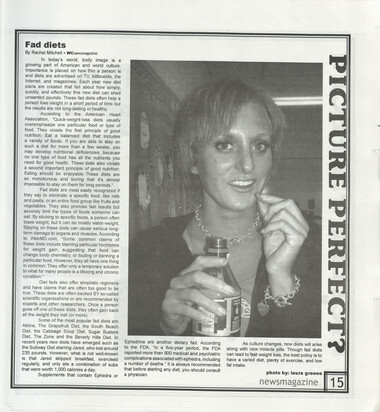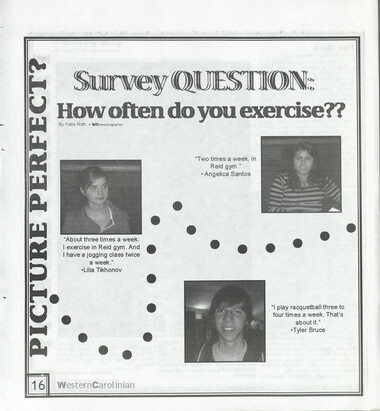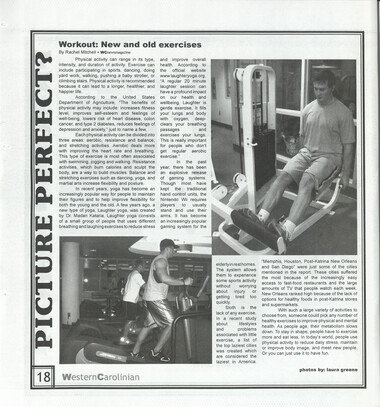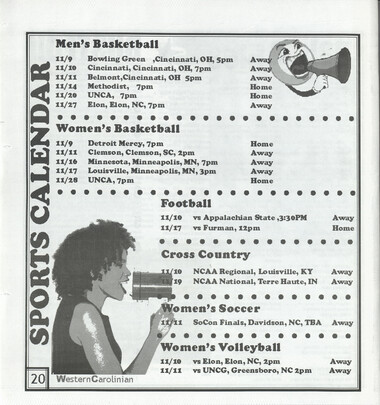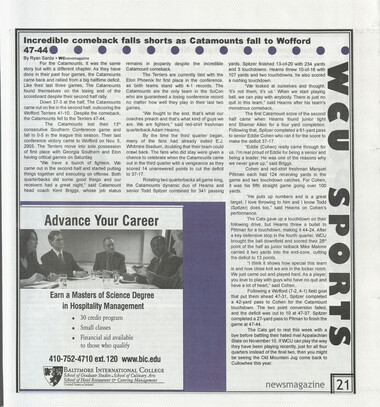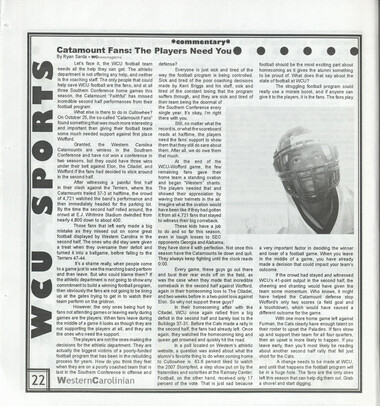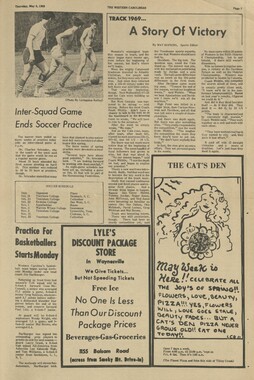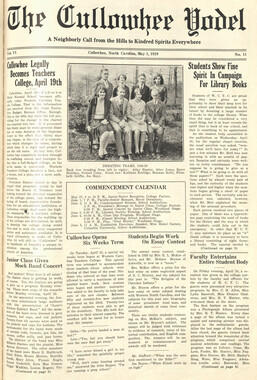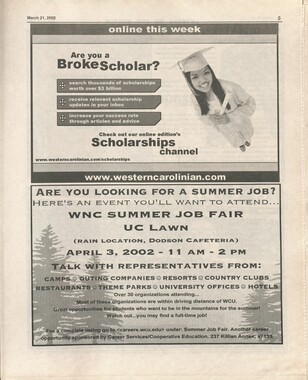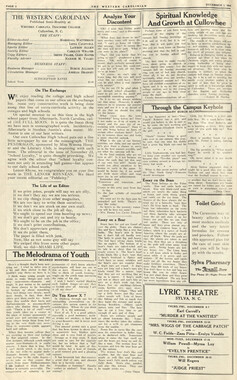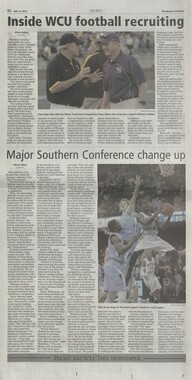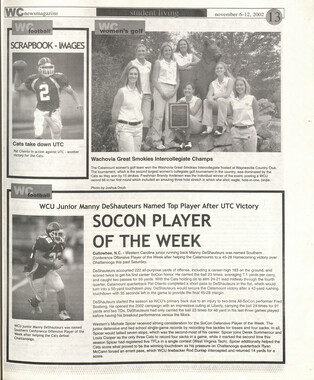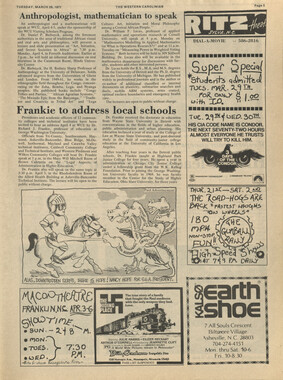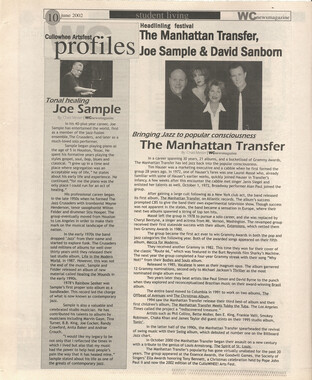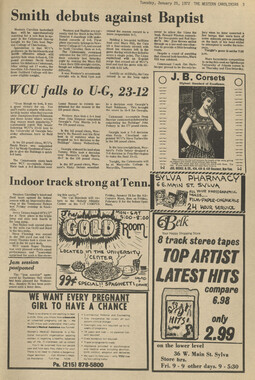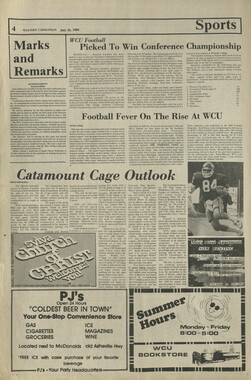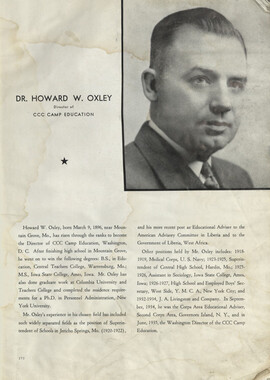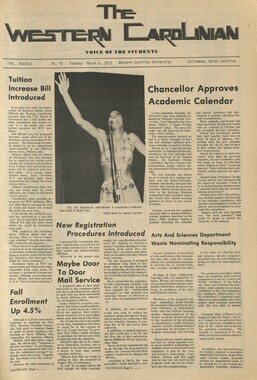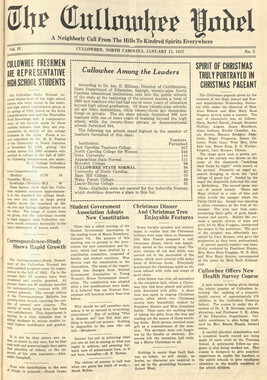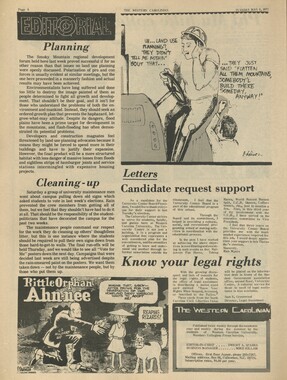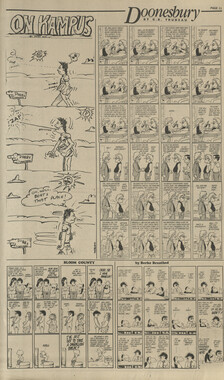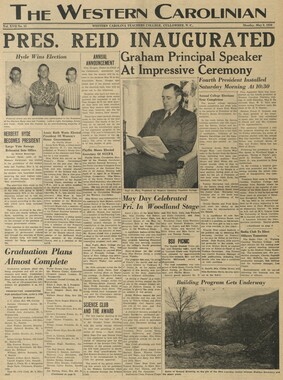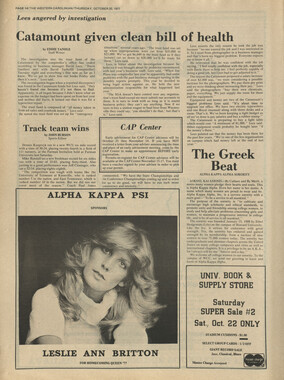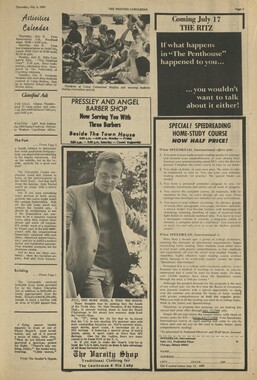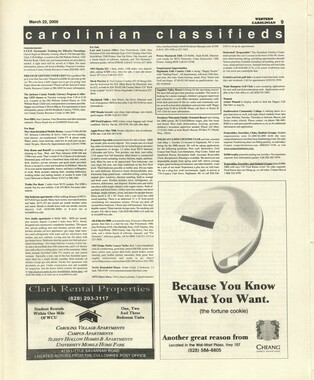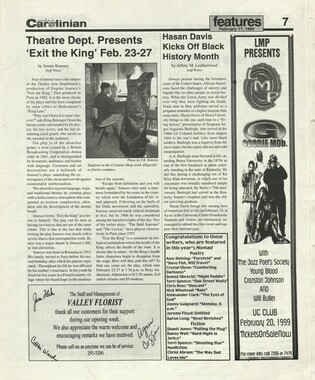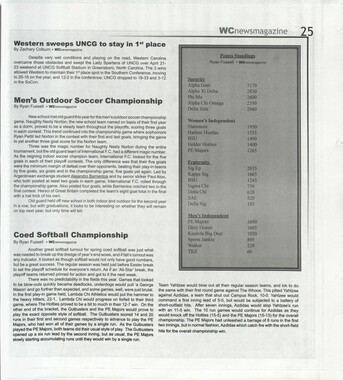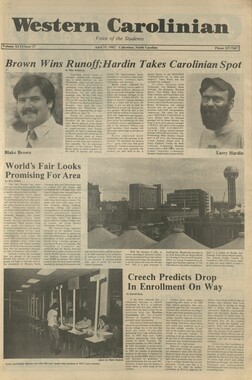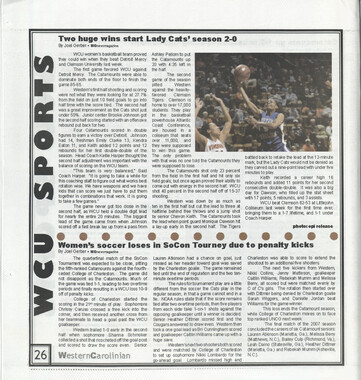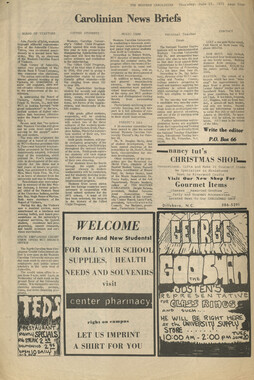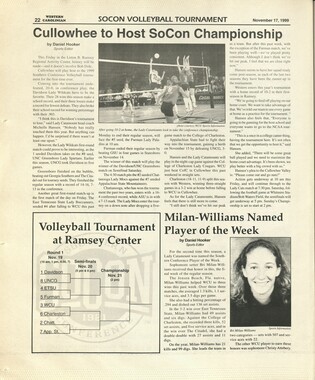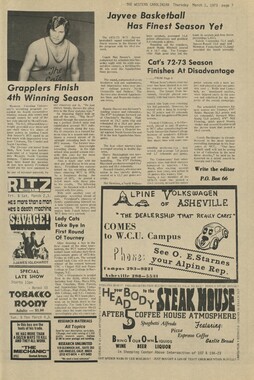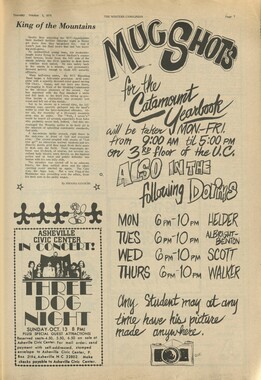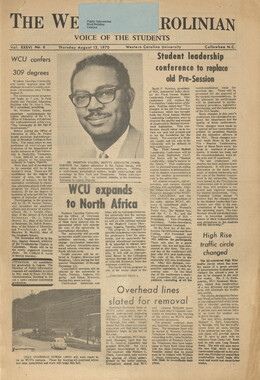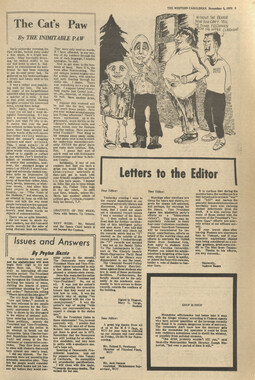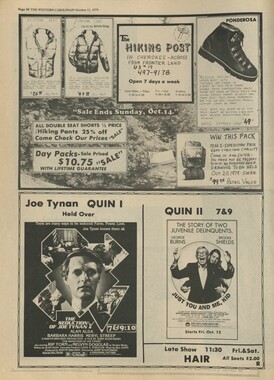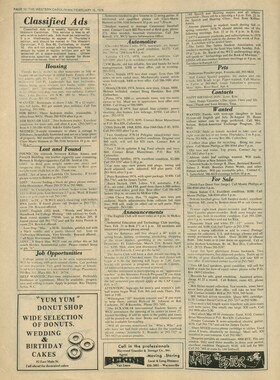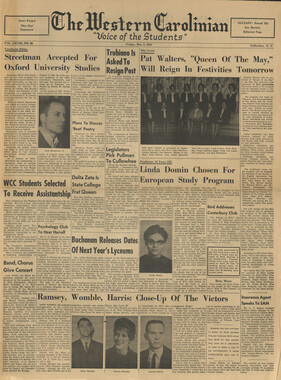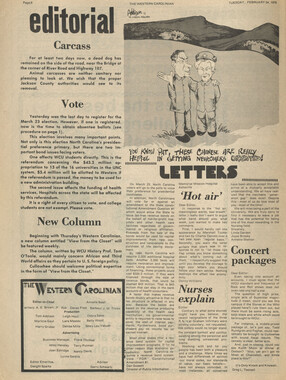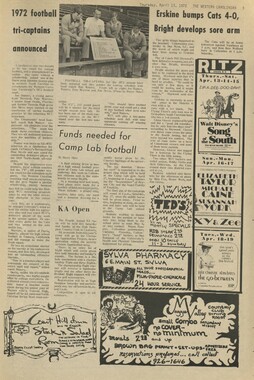Western Carolina University (21)
View all
- Canton Champion Fibre Company (2308)
- Cherokee Traditions (291)
- Civil War in Southern Appalachia (165)
- Craft Revival (1942)
- George Masa Collection (137)
- Great Smoky Mountains - A Park for America (3080)
- Highlights from Western Carolina University (422)
- Horace Kephart (973)
- Journeys Through Jackson (159)
- LGBTQIA+ Archive of Jackson County (89)
- Oral Histories of Western North Carolina (318)
- Picturing Appalachia (6617)
- Stories of Mountain Folk (413)
- Travel Western North Carolina (153)
- Western Carolina University Fine Art Museum Vitreograph Collection (129)
- Western Carolina University Herbarium (92)
- Western Carolina University: Making Memories (738)
- Western Carolina University Publications (2491)
- Western Carolina University Restricted Electronic Theses and Dissertations (146)
- Western North Carolina Regional Maps (71)
- World War II in Southern Appalachia (131)
University of North Carolina Asheville (6)
View all
- Allanstand Cottage Industries (62)
- Appalachian National Park Association (53)
- Bennett, Kelly, 1890-1974 (1463)
- Berry, Walter (76)
- Brasstown Carvers (40)
- Carver, George Washington, 1864?-1943 (26)
- Cathey, Joseph, 1803-1874 (1)
- Champion Fibre Company (233)
- Champion Paper and Fibre Company (297)
- Cherokee Indian Fair Association (16)
- Cherokee Language Program (22)
- Crowe, Amanda (40)
- Edmonston, Thomas Benton, 1842-1907 (7)
- Ensley, A. L. (Abraham Lincoln), 1865-1948 (275)
- Fromer, Irving Rhodes, 1913-1994 (70)
- George Butz (BFS 1907) (46)
- Goodrich, Frances Louisa (120)
- Grant, George Alexander, 1891-1964 (96)
- Heard, Marian Gladys (60)
- Kephart, Calvin, 1883-1969 (15)
- Kephart, Horace, 1862-1931 (313)
- Kephart, Laura, 1862-1954 (67)
- Laney, Gideon Thomas, 1889-1976 (439)
- Masa, George, 1881-1933 (61)
- McElhinney, William Julian, 1896-1953 (44)
- Niggli, Josephina, 1910-1983 (10)
- North Carolina Park Commission (105)
- Osborne, Kezia Stradley (9)
- Owens, Samuel Robert, 1918-1995 (11)
- Penland Weavers and Potters (36)
- Roberts, Vivienne (15)
- Roth, Albert, 1890-1974 (142)
- Schenck, Carl Alwin, 1868-1955 (1)
- Sherrill's Photography Studio (2565)
- Southern Highland Handicraft Guild (127)
- Southern Highlanders, Inc. (71)
- Stalcup, Jesse Bryson (46)
- Stearns, I. K. (213)
- Thompson, James Edward, 1880-1976 (226)
- United States. Indian Arts and Crafts Board (130)
- USFS (683)
- Vance, Zebulon Baird, 1830-1894 (1)
- Weaver, Zebulon, 1872-1948 (58)
- Western Carolina College (230)
- Western Carolina Teachers College (282)
- Western Carolina University (2008)
- Western Carolina University. Mountain Heritage Center (18)
- Whitman, Walt, 1819-1892 (10)
- Wilburn, Hiram Coleman, 1880-1967 (73)
- Williams, Isadora (3)
- Cain, Doreyl Ammons (0)
- Crittenden, Lorraine (0)
- Rhodes, Judy (0)
- Smith, Edward Clark (0)
- Appalachian Region, Southern (3032)
- Asheville (N.C.) (1945)
- Avery County (N.C.) (26)
- Blount County (Tenn.) (195)
- Buncombe County (N.C.) (1680)
- Cherokee County (N.C.) (283)
- Clay County (N.C.) (556)
- Graham County (N.C.) (238)
- Great Smoky Mountains National Park (N.C. and Tenn.) (525)
- Haywood County (N.C.) (3573)
- Henderson County (N.C.) (70)
- Jackson County (N.C.) (4925)
- Knox County (Tenn.) (35)
- Knoxville (Tenn.) (13)
- Lake Santeetlah (N.C.) (10)
- Macon County (N.C.) (421)
- Madison County (N.C.) (216)
- McDowell County (N.C.) (39)
- Mitchell County (N.C.) (135)
- Polk County (N.C.) (35)
- Qualla Boundary (982)
- Rutherford County (N.C.) (78)
- Swain County (N.C.) (2185)
- Transylvania County (N.C.) (270)
- Watauga County (N.C.) (12)
- Waynesville (N.C.) (86)
- Yancey County (N.C.) (72)
- Aerial Photographs (3)
- Aerial Views (60)
- Albums (books) (4)
- Articles (1)
- Artifacts (object Genre) (228)
- Bibliographies (1)
- Biography (general Genre) (2)
- Cards (information Artifacts) (38)
- Clippings (information Artifacts) (192)
- Copybooks (instructional Materials) (3)
- Crafts (art Genres) (622)
- Depictions (visual Works) (21)
- Design Drawings (1)
- Digital Moving Image Formats (2)
- Drawings (visual Works) (185)
- Envelopes (101)
- Exhibitions (events) (1)
- Facsimiles (reproductions) (1)
- Fiction (general Genre) (4)
- Financial Records (12)
- Fliers (printed Matter) (67)
- Glass Plate Negatives (381)
- Guidebooks (2)
- Internegatives (10)
- Interviews (823)
- Land Surveys (102)
- Letters (correspondence) (1045)
- Manuscripts (documents) (618)
- Maps (documents) (177)
- Memorandums (25)
- Minutes (administrative Records) (59)
- Negatives (photographs) (6090)
- Newsletters (1290)
- Newspapers (2)
- Notebooks (8)
- Occupation Currency (1)
- Paintings (visual Works) (1)
- Pen And Ink Drawings (1)
- Periodicals (194)
- Personal Narratives (10)
- Photographs (12977)
- Plans (maps) (1)
- Poetry (6)
- Portraits (4568)
- Postcards (329)
- Programs (documents) (181)
- Publications (documents) (2444)
- Questionnaires (65)
- Relief Prints (26)
- Sayings (literary Genre) (1)
- Scrapbooks (282)
- Sheet Music (2)
- Slides (photographs) (402)
- Songs (musical Compositions) (2)
- Sound Recordings (802)
- Specimens (92)
- Speeches (documents) (18)
- Tintypes (photographs) (8)
- Transcripts (329)
- Text Messages (0)
- A.L. Ensley Collection (275)
- Appalachian Industrial School Records (7)
- Appalachian National Park Association Records (336)
- Axley-Meroney Collection (2)
- Bayard Wootten Photograph Collection (20)
- Bethel Rural Community Organization Collection (7)
- Blumer Collection (5)
- C.W. Slagle Collection (20)
- Canton Area Historical Museum (2110)
- Carlos C. Campbell Collection (462)
- Cataloochee History Project (64)
- Cherokee Studies Collection (4)
- Daisy Dame Photograph Album (5)
- Daniel Boone VI Collection (1)
- Doris Ulmann Photograph Collection (112)
- Elizabeth H. Lasley Collection (1)
- Elizabeth Woolworth Szold Fleharty Collection (4)
- Frank Fry Collection (95)
- George Masa Collection (173)
- Gideon Laney Collection (452)
- Hazel Scarborough Collection (2)
- Hiram C. Wilburn Papers (28)
- Historic Photographs Collection (236)
- Horace Kephart Collection (861)
- Humbard Collection (33)
- Hunter and Weaver Families Collection (1)
- I. D. Blumenthal Collection (4)
- Isadora Williams Collection (4)
- Jesse Bryson Stalcup Collection (47)
- Jim Thompson Collection (224)
- John B. Battle Collection (7)
- John C. Campbell Folk School Records (80)
- John Parris Collection (6)
- Judaculla Rock project (2)
- Kelly Bennett Collection (1482)
- Love Family Papers (11)
- Major Wiley Parris Civil War Letters (3)
- Map Collection (12)
- McFee-Misemer Civil War Letters (34)
- Mountain Heritage Center Collection (4)
- Norburn - Robertson - Thomson Families Collection (44)
- Pauline Hood Collection (7)
- Pre-Guild Collection (2)
- Qualla Arts and Crafts Mutual Collection (12)
- R.A. Romanes Collection (681)
- Rosser H. Taylor Collection (1)
- Samuel Robert Owens Collection (94)
- Sara Madison Collection (144)
- Sherrill Studio Photo Collection (2558)
- Smoky Mountains Hiking Club Collection (616)
- Stories of Mountain Folk - Radio Programs (374)
- The Reporter, Western Carolina University (510)
- Venoy and Elizabeth Reed Collection (16)
- WCU Gender and Sexuality Oral History Project (36)
- WCU Mountain Heritage Center Oral Histories (25)
- WCU Oral History Collection - Mountain People, Mountain Lives (71)
- WCU Students Newspapers Collection (1923)
- Western North Carolina Tomorrow Black Oral History Project (69)
- William Williams Stringfield Collection (2)
- Zebulon Weaver Collection (109)
- African Americans (390)
- Appalachian Trail (35)
- Artisans (521)
- Cherokee art (84)
- Cherokee artists -- North Carolina (10)
- Cherokee language (21)
- Cherokee pottery (101)
- Cherokee women (208)
- Church buildings (190)
- Civilian Conservation Corps (U.S.) (111)
- College student newspapers and periodicals (2012)
- Dams (108)
- Dance (1023)
- Education (222)
- Floods (63)
- Folk music (1015)
- Forced removal, 1813-1903 (2)
- Forest conservation (220)
- Forests and forestry (1198)
- Gender nonconformity (4)
- Great Smoky Mountains National Park (N.C. and Tenn.) (181)
- Hunting (47)
- Landscape photography (25)
- Logging (122)
- Maps (83)
- Mines and mineral resources (9)
- North Carolina -- Maps (18)
- Paper industry (38)
- Postcards (255)
- Pottery (135)
- Railroad trains (72)
- Rural electrification -- North Carolina, Western (3)
- School integration -- Southern States (2)
- Segregation -- North Carolina, Western (5)
- Slavery (5)
- Sports (452)
- Storytelling (243)
- Waterfalls -- Great Smoky Mountains (N.C. and Tenn.) (66)
- Weaving -- Appalachian Region, Southern (280)
- Wood-carving -- Appalachian Region, Southern (328)
- World War, 1939-1945 (173)
Western Carolinian Volume 72 Number 08
Item
Item’s are ‘child’ level descriptions to ‘parent’ objects, (e.g. one page of a whole book).
-
-
What ads are really sellin By Katie Rath Wenewsmagazine According to an article on HealthyPlace. com, the average person sees between 400 and 600 advertisements per day. One in ten television commercials has a direct statement about beauty or physical appearance. The American Academy of Pediatrics conducted a study and found that 69% of girls said that magazine models influence their perfect body shape. All in all, it's no wonder that upwards of 1 in 5 women struggle with unhealthy eating habits; and statistics regarding male eating disorders and Body Dysmorphic Disorder are creeping out of the woodwork. Though most advertisements digitally change photographs, new advertising campaigns are outlining the curves of a real body. The acceptance of the typical body type that media advertises obviously creates an impractical standard for women. Less than 1% of women worldwide are the ideal catwalk model type. Because of the promotion of very thin models, some research is saying that girls try their first diet at the age of 9. Because they idealize Western culture, other cultures, which are less conscious of Western media ideals. of thinness, are being sucked into this trend. Not only is thinness the fad, but media images also display the perfect facial features of a woman. Most of the time, if a woman wants those features, she must have cosmetic surgery. If she cant afford it, she is forced to feel bad about her appearance, causing mental anxiety and possible disorders. Men are also influenced by popular advertising. The depiction of the average man in Western advertising is a muscular, white-toothed, tall man. The alarming trend in the bulking-up of action figures influences very young boys when they see the toys being advertised during Saturday morning cartoons. Researchers attribute the recent upswing of steroid use in men ages 17- 2/ to the way body image is being advertised. For both men and women, there are also behaviors associated with body image conceptions. Men are told to be ultra-masculine and strong, both physically and emotionally. Women are encouraged to be dainty, sweet, passive, or seductive. . Advertisements from makeup to power tools influence how men and women see their bodies and their roles in their cultures. g: The impact of advertising on body image Fortunately, popular advertising is taking a turn towards the more realistic. One of the most popular campaigns is the Dove Campaign for Real Beauty, a line of advertisements that depict average women embracing their natural bodies. Last year, models in the Madrid Fashion Week were banned because their body mass indexes (BMIs) were too low. The Body Shop, a bath and beauty product company based in the UK, developed a marketing campaign with a doll named Ruby, a dress size-16 doll that mocked the unrealistic Barbie. Mattel sued the Body Shop in 1998, and they were forced to pull Ruby from ads, but not before she broke the mold for typical advertising. Airbrushing acne .and cellulite, hiding skin rolls and imperfections, creating breasts that arent there, shading muscles that aren't naturally defined, and generally choosing the body images that do not represent the masses, are all ways ads mess up mens and womens body images. Though there are companies that are fighting to be real with consumers, we still have a long way to go before ads actually aim to sell the product instead of the person holding it. By Whitney Woody WGnewsmagazine We all know that peer pressure is a big issue in high school, what most of us don't realize is that that same peer pressure can follow us into our college years. Whether we want to admit it or not, the media has a big influence on our lives. Men struggle to gain muscle like their favorite action heroes, and women starve themselves In an attempt to be as thin as runway models and Hollywood actresses. Students feed off of legendary diet plans, from everything from Jenny Craig to diet and muscle pills, most people will do anything to achieve that perfect look. Just as children have an admiration for their famous superheroes, teenagers and young adults, such as college students, usually tend to have an admiration for others as well, at times, movie stars, considering they're in the public eye so often. There is always that slight adrniration and desire to be like those we look up to, or rather, those we want to look like. This desire creates pressure on students to change themselves. | dont think [celebrities] put pressure on me, personally, declares sophomore Laura Britton, but most people see them and think they can be as well-liked as the celebrities if they looked like them. The one thing that students need to understand is that there is no need to look just like everyone else, especially those in the media. There is an admiration to be like them, claims senior Nancy Madenyika, but there isnt one way to look or be, there is no perfect person, we shouldn't rupture our physical appearance. Not only do fans of those who are in the public eye suffer, but those actors and actresses have problems of their own. Standards in Hollywood are continuously changing. Some actors and actresses can't receive a role because they are overweight, and more recently, those same actors and actresses who lost the weight are being told they cant have a different role because they dont weigh enough. Itis obviously not healthy to force oneself to gain or lose so much weight at a time, nor is it appealing that society has found a way to determine what the perfect person should look like. In the past the ideal woman should basically have an hourglass figure; tiny waists were a must, and because of that, women took drastic measure to mold themselves to that image. In todays society, its alright to be full- figured in some instances, but nothing is ever permanent. The industry an actor or actress works for determines what he or she should strive to look like, therein programming it into their fans minds what they should also strive to look like. It's a no-win situation. The best thing to do is keep in mind that no one is perfect. It is pointless to change yourself to try and fit into the norm or style, because that style is forever changing. There is no ideal way to look as the media suggests, yet more and more the public continues to strive to be something they simply are not. Perhaps the greater challenge, rather than changing yourself to please everyone else, is to find a medium and ultimately just accept who you are and be lagazine | grateful for it. Newsy 2 11 LIAANAd AMA LIId ee a a ee
Object
Object’s are ‘parent’ level descriptions to ‘children’ items, (e.g. a book with pages).
-
The Western Carolinian is Western Carolina University's student-run newspaper. The paper was published as the Cullowhee Yodel from 1924 to 1931 before changing its name to The Western Carolinian in 1933.
-

